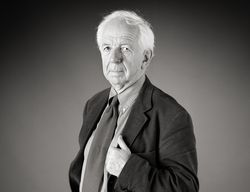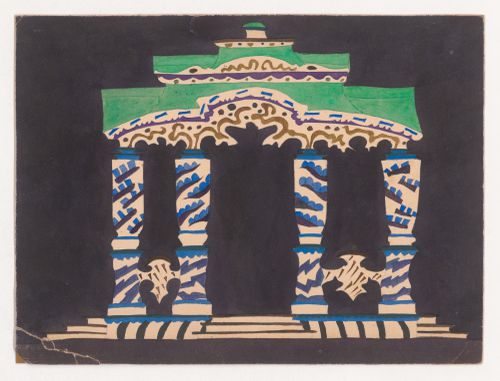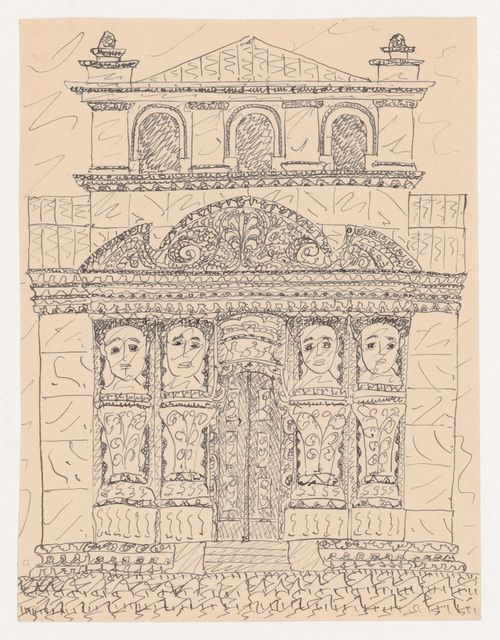drawings, textual records, born digital
AP181.S1.015
Description:
Original directory name: "18_AN- Ausführende Firmen". File consists of records related to the construction, or execution, phase of the BMW Welt project. There are five high-level directories, identified with numerical codes and which element of the construction is being addressed by the records: construction signs, facade engineering, foundations, structural work, and facade steel construction. The firms include Werbetechnik Deger, Bauer, and Maurer Söhne. The bulk of the records is found under the "3060_Stahlbau_Fassade_MSG" directory, consisting of CAD drawings and 3D models for the roof support head points, the service walkways, cover panels, placement of security cameras, the internal helix, the drainage system, etc. These are CAD files, screen captures, and annotated digitisations of printed drawings, the latter two showing very specific details of the structure. There are approximately 500 plotter files in directories "3017 Fassadentechnik" (facade engineering) and "3060_Stahlbau_Fassade_MSG/I_Pläne/Ausgang", some being in archive files (.zip). Files also include some textual records, such as lists, presentations, and correspondence between stakeholders. Most common file formats: JPEG File Interchange Format, Hewlett Packard Vector Graphic Plotter File, Acrobat PDF 1.3 - Portable Document Format, AutoCAD Drawing, Acrobat PDF 1.4 - Portable Document Format
2003-2007
Construction documentation, BMW Welt, Munich
Actions:
AP181.S1.015
Description:
Original directory name: "18_AN- Ausführende Firmen". File consists of records related to the construction, or execution, phase of the BMW Welt project. There are five high-level directories, identified with numerical codes and which element of the construction is being addressed by the records: construction signs, facade engineering, foundations, structural work, and facade steel construction. The firms include Werbetechnik Deger, Bauer, and Maurer Söhne. The bulk of the records is found under the "3060_Stahlbau_Fassade_MSG" directory, consisting of CAD drawings and 3D models for the roof support head points, the service walkways, cover panels, placement of security cameras, the internal helix, the drainage system, etc. These are CAD files, screen captures, and annotated digitisations of printed drawings, the latter two showing very specific details of the structure. There are approximately 500 plotter files in directories "3017 Fassadentechnik" (facade engineering) and "3060_Stahlbau_Fassade_MSG/I_Pläne/Ausgang", some being in archive files (.zip). Files also include some textual records, such as lists, presentations, and correspondence between stakeholders. Most common file formats: JPEG File Interchange Format, Hewlett Packard Vector Graphic Plotter File, Acrobat PDF 1.3 - Portable Document Format, AutoCAD Drawing, Acrobat PDF 1.4 - Portable Document Format
drawings, textual records, born digital
2003-2007
Hubert Damisch, 2003-2004 CCA Mellon Senior Fellow, examines Blur – the cloud building created by New York architects Diller + Scofidio on lake Neuchâtel in Switzerland, which is the most recent and radical expression of the desire for fluidity and evanescence in architecture – and the consequences that it might have on the future of structural thought. Damisch examines(...)
Paul Desmarais Theatre
8 May 2003
Hubert Damisch: “Effacer l’architecture?”
Actions:
Description:
Hubert Damisch, 2003-2004 CCA Mellon Senior Fellow, examines Blur – the cloud building created by New York architects Diller + Scofidio on lake Neuchâtel in Switzerland, which is the most recent and radical expression of the desire for fluidity and evanescence in architecture – and the consequences that it might have on the future of structural thought. Damisch examines(...)
Paul Desmarais Theatre
DR1988:0258
Description:
- Design for a pavilion supported by at least four columns, and set against a dark purple background.
architecture
circa 1920-1921
Visionary design for a pavilion
Actions:
DR1988:0258
Description:
- Design for a pavilion supported by at least four columns, and set against a dark purple background.
architecture
DR1988:0037
Description:
- Design for the front elevation of a building with a portico supported by two herms on both sides of the doorway.
architecture
1918 ?
Visionary design for a funerary chapel
Actions:
DR1988:0037
Description:
- Design for the front elevation of a building with a portico supported by two herms on both sides of the doorway.
architecture
drawings, books
PH1986:1430.01:001-091
Description:
- Contemporary binding consists of a red cloth-covered boards and a red leather-covered spine. There is a gold gilt inscription on the cover and spine. Endpapers are of marbled paper. Pages are of brownish white paper. Secondary supports are of brownish white cardboard and brownish white construction paper, with tissue paper overlays. The book is comprised of two tomes, each with a title page, pages of text and 46 and 43 photomechanical prints, respectively.
architecture
published 1892 and 1894
Paysages et Monuments du Poitou. Photographies par Jules Robuchon. Les Deux - Sévres, volume 1, tomes VIII and VI
Actions:
PH1986:1430.01:001-091
Description:
- Contemporary binding consists of a red cloth-covered boards and a red leather-covered spine. There is a gold gilt inscription on the cover and spine. Endpapers are of marbled paper. Pages are of brownish white paper. Secondary supports are of brownish white cardboard and brownish white construction paper, with tissue paper overlays. The book is comprised of two tomes, each with a title page, pages of text and 46 and 43 photomechanical prints, respectively.
drawings, books
published 1892 and 1894
architecture
books, photographs
PH1985:1086:001-102
Description:
- Contemporary binding consists of green cloth-covered boards and a red leather-covered spine. There are gold gilt inscriptions and decorations on the cover and spine. Endpapers are of blue paper. Pages and secondary supports are of brownish white paper. The book comprises a title page, dedication page, table of contents, introduction, text discussing 100 different old country houses in and around Glasgow, with 100 accompanying photographs, and two photographs of old maps of Glasgow.
architecture, engineering
published 1870
The Old Country Houses of the Old Glasgow Gentry
Actions:
PH1985:1086:001-102
Description:
- Contemporary binding consists of green cloth-covered boards and a red leather-covered spine. There are gold gilt inscriptions and decorations on the cover and spine. Endpapers are of blue paper. Pages and secondary supports are of brownish white paper. The book comprises a title page, dedication page, table of contents, introduction, text discussing 100 different old country houses in and around Glasgow, with 100 accompanying photographs, and two photographs of old maps of Glasgow.
books, photographs
published 1870
architecture, engineering
archives
Level of archival description:
Fonds
John Bird fonds
AP108
Synopsis:
The John Bird fonds documents the professional practice of the Westmount-based architect, and includes drawings and photographs of 24 architectural projects carried out in and around Montréal, Québec between 1954 and 1992. The fonds also contains a number of published articles that document John Bird's professional activities. Key projects that are represented include the Canadian Technical Tape Building, St. Laurent (1955-1963), Saint Gabriel's Church, Montréal (1959-1960), and Saint John Brebeuf Church, Lasalle (1962-1966). The fonds also includes numerous projects for Toronto-Dominion Bank buildings (1959-1992) as well as residential designs completed for the Central Mortgage and Housing Corporation (1956-1969).
1942 - 1992
John Bird fonds
Actions:
AP108
Synopsis:
The John Bird fonds documents the professional practice of the Westmount-based architect, and includes drawings and photographs of 24 architectural projects carried out in and around Montréal, Québec between 1954 and 1992. The fonds also contains a number of published articles that document John Bird's professional activities. Key projects that are represented include the Canadian Technical Tape Building, St. Laurent (1955-1963), Saint Gabriel's Church, Montréal (1959-1960), and Saint John Brebeuf Church, Lasalle (1962-1966). The fonds also includes numerous projects for Toronto-Dominion Bank buildings (1959-1992) as well as residential designs completed for the Central Mortgage and Housing Corporation (1956-1969).
archives
Level of archival description:
Fonds
1942 - 1992
ARCH250582
Description:
- 1 caméra de type "chambre de campagne"; - 1 filtre Leika; - 1 filtre oranger; - 2 châssis; - 2 déclencheurs souples; - 1 table de pose "Diaphot Ica" dans son étui; 1 table de pose de marque "The Expodak Co., Charlottesville Virginia" - 1 lentille ? " Kodak Portrait Attachment" dans sa boîte; - 3 supports ? à film (film sheath) de marque Eastman Kodak; - 1 accessoire en bois et en métal d'usage inconnu; - 1 courroie en cuir; - 1 clé; dans un boîtier - 1 châssis à film; - 1 verre dépoli de caméra grand format (viseur);
Caméra de type "chambre de campagne" et équipement photographique dans un boîtier
Actions:
ARCH250582
Description:
- 1 caméra de type "chambre de campagne"; - 1 filtre Leika; - 1 filtre oranger; - 2 châssis; - 2 déclencheurs souples; - 1 table de pose "Diaphot Ica" dans son étui; 1 table de pose de marque "The Expodak Co., Charlottesville Virginia" - 1 lentille ? " Kodak Portrait Attachment" dans sa boîte; - 3 supports ? à film (film sheath) de marque Eastman Kodak; - 1 accessoire en bois et en métal d'usage inconnu; - 1 courroie en cuir; - 1 clé; dans un boîtier - 1 châssis à film; - 1 verre dépoli de caméra grand format (viseur);
textual records, photographs
DR2004:0140
Description:
photographs, correspondence, invoices, trade catalogues, brochures, publications, clippings, appendices from Draft for Development Air Supported Structures, and subscription forms
Photographs, correspondence, invoices, trade catalogues
Actions:
DR2004:0140
Description:
photographs, correspondence, invoices, trade catalogues, brochures, publications, clippings, appendices from Draft for Development Air Supported Structures, and subscription forms
textual records, photographs
Series
Une architecture des humeurs
AP193.S4
Description:
Series 4, Une architecture des humeurs, 2008-2011, documents the conception and the presentation of exhibition and project Une architecture des humeurs. Presented at Le laboratoire art gallery in Paris between January and May 2010, Une architecture des humeurs is a conceptual, unbuilt, residential urban structure based on a potential future in which contemporary science reads human physiology and chemical balance. The idea is to acquire a chemistry of the “humors”, or the moods and temperament, of future purchasers. Taken as input, the information generates a diversity of habitable morphologies and relationships between them. With this process, the project attempts to make palpable and graspable, through technologies, the emotions of the participants captured via the chemistry of their body. The goal is to gather information on their capacity of adaptation, their level of sympathy and empathy while confronted to a situation or an environment. This information is then analyzed by computational, mathematical, and machinist procedures. This leads to the design and production of an urban structure submitted to the improbable and uncertain protocols produced by emotions, also creating aggregations and layouts that rearticulate the links between the individual and the collective. These structures are calculated following simultaneously incremental and recursive structural optimization protocols resulting in the physicality and morphology of architecture. The layout of the residential units and the structural trajectories are conceived and developed as posterior to the constructs supporting social life and not as an a priori. The structure of each components of the urban structure is generated by a secretion and weaving machine called Viab02. The machine is the second prototype of VIAB which was developed with Robotics Research Lab of the University of Southern California and takes its name from the terms viability and variability. With a process similar to contour crafting, the machine produces bio-cement, a mix between cement and bio-resin, giving form to the adapted residential structures. The records consist largely of images detailing the creative process of the firm, photographs of the exhibition, and 3D models. It also contains animated renderings representing the machine in action and sequences of the construction of the building or the structure. The records include a video orienting the project into François Roche theoretical stance, research as speculation, that can be summarize as the use of technological tools to take a critical and political position through esthetic in order to open new lines of thoughts. AP193.S2 contains updated previous version of the VIAB machine
2008-2011
Une architecture des humeurs
Actions:
AP193.S4
Description:
Series 4, Une architecture des humeurs, 2008-2011, documents the conception and the presentation of exhibition and project Une architecture des humeurs. Presented at Le laboratoire art gallery in Paris between January and May 2010, Une architecture des humeurs is a conceptual, unbuilt, residential urban structure based on a potential future in which contemporary science reads human physiology and chemical balance. The idea is to acquire a chemistry of the “humors”, or the moods and temperament, of future purchasers. Taken as input, the information generates a diversity of habitable morphologies and relationships between them. With this process, the project attempts to make palpable and graspable, through technologies, the emotions of the participants captured via the chemistry of their body. The goal is to gather information on their capacity of adaptation, their level of sympathy and empathy while confronted to a situation or an environment. This information is then analyzed by computational, mathematical, and machinist procedures. This leads to the design and production of an urban structure submitted to the improbable and uncertain protocols produced by emotions, also creating aggregations and layouts that rearticulate the links between the individual and the collective. These structures are calculated following simultaneously incremental and recursive structural optimization protocols resulting in the physicality and morphology of architecture. The layout of the residential units and the structural trajectories are conceived and developed as posterior to the constructs supporting social life and not as an a priori. The structure of each components of the urban structure is generated by a secretion and weaving machine called Viab02. The machine is the second prototype of VIAB which was developed with Robotics Research Lab of the University of Southern California and takes its name from the terms viability and variability. With a process similar to contour crafting, the machine produces bio-cement, a mix between cement and bio-resin, giving form to the adapted residential structures. The records consist largely of images detailing the creative process of the firm, photographs of the exhibition, and 3D models. It also contains animated renderings representing the machine in action and sequences of the construction of the building or the structure. The records include a video orienting the project into François Roche theoretical stance, research as speculation, that can be summarize as the use of technological tools to take a critical and political position through esthetic in order to open new lines of thoughts. AP193.S2 contains updated previous version of the VIAB machine
Series
2008-2011



